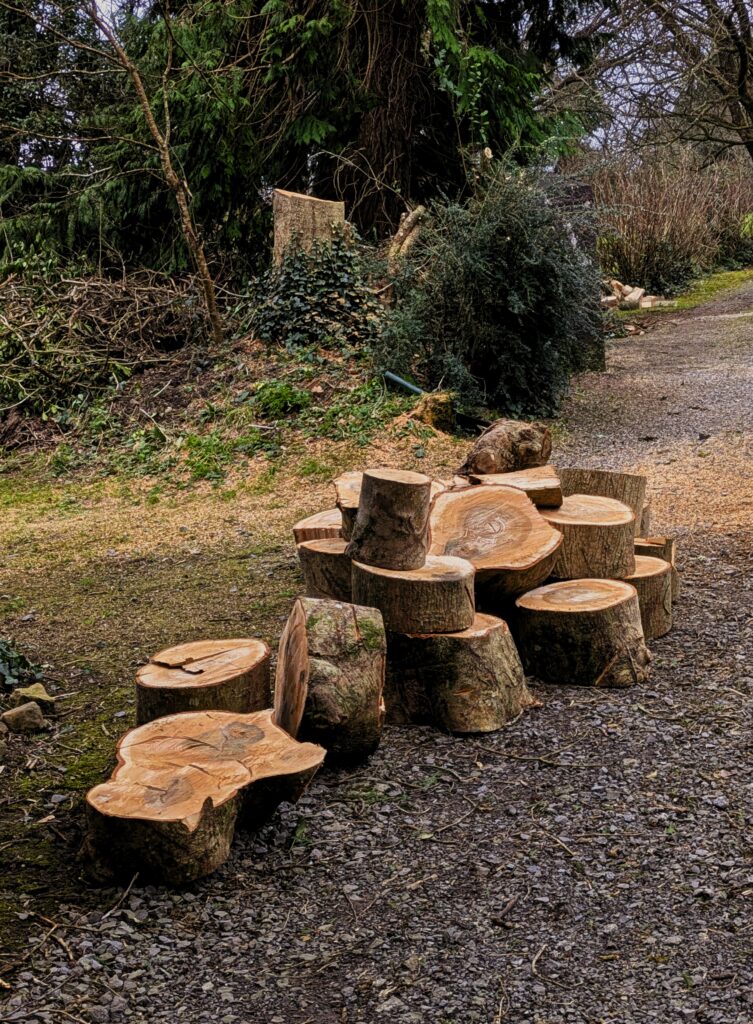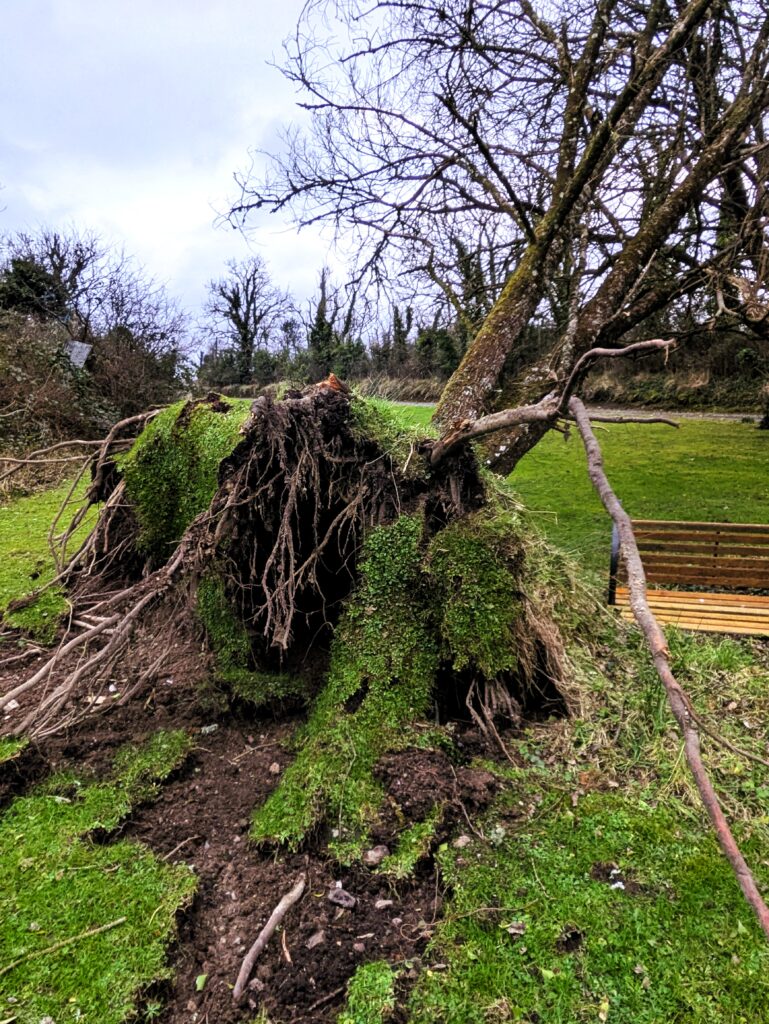
The storm that hit Ireland on the night of the 23rd and on into the 24th January 2025 was a big one. Whether this was a stronger extratropical cyclone than ‘Hurricane Debbie’ which whipped its way across Ireland, taking much the same route in September 1961, is hard to tell. Eowyn, I believe, has broken records with the highest-ever top wind speeds that Ireland has yet seen. The main difference, perhaps. was that Debbie led to the loss of eighteen lives and around fifty people injured around the country. Eowyn, caused only one death.
How storms Debbie or Eowyn compare to the ‘Night of the Big wind’ a storm that devstated Ireland on 7th January, 1839, is hard to tell. There are, of course, no meteorological records but there a great many accounts remain. Some are still remembered in the Irish National Folklore Schools Collection.
There was, indeed, extensive damage to infrastructure caused by Storm Debbie and many structures were damaged or even destroyed. My neighbours still remember it well! Newspapers reported that the city of Galway “resembled a bombed area’. Damage in Roscommon was described as “impossible to calculate,” as all power and communication around the town was lost. There were demands, back then, for electicity cables to be re-laid underground. In the aftermath of Eowyn, more than sixty years later, these calls can be heard again. Power and communication cables remain overground and just as vulnerable.
It is now the best part of three weeks since the storm. Finally, in the west and midlands of Ireland, most badly hit by the storm, nearly all properties finally have power again But even this morning, a delivery driver reported to me that there were still local clusters in the Roscommon and Sligo area where power was not yet restored. Reconnection of phone lines and broadband cables has a long way to go yet, although repair teams are working flat out.

One of the main reasons for the length of the clear up , especially in the Northwest of Ireland is something that I addressed in a recent podcast Lament for the Ash. In this episode I mentioned the effect of widely planted Sitka spruce plantations, which were deemed the most appropriate usage for Leitrim land, in the early 1990’s and my fight to plant broadleaf woodland instead. Such plantations happened right around the country but were particularly prevelent, or so it seemed to me, in the northwest. In the Lament for the Ash podcast, I concentrated, largely, on the detrimental results of clear felling for the soil and future fertility. However storm Eowyn dramatically demonstrated the on-going problem of electricity and communication cable corridors, transversing these closely planted, now fully grown, Sitka spruce plantations.
A few days ago I came cross a YouTube video created by Stephen J. Reid. I asked him if I could share it on Story Archaeology. I do think he is able to illustate the extent of the problem extremely effectively. Mono-plantations were never really the answer and have proved to be a considerable problem. Take a look for yourself.
